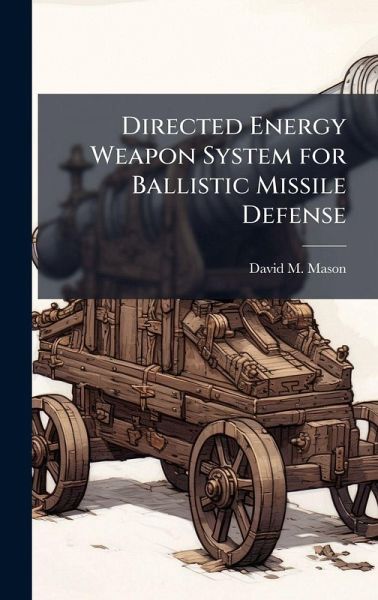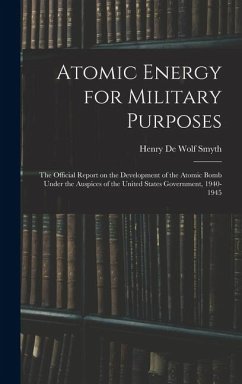
Directed Energy Weapon System for Ballistic Missile Defense
Versandkostenfrei!
Versandfertig in über 4 Wochen
28,99 €
inkl. MwSt.
Weitere Ausgaben:

PAYBACK Punkte
14 °P sammeln!
Ballistic missiles carrying nuclear weapons and the proliferation of nuclear weapons represent two of the gravest threats to the security of the United States, its service members, and allies. It may come as no surprise that the international threat environment the U.S. will face for many decades to come will be fundamentally different from the Cold War era and different from today's global fight against terrorist organizations and extremism. The list of global actors who possess ballistic missiles or seek to acquire the technology has grown exponentially over the years from a total of nine co...
Ballistic missiles carrying nuclear weapons and the proliferation of nuclear weapons represent two of the gravest threats to the security of the United States, its service members, and allies. It may come as no surprise that the international threat environment the U.S. will face for many decades to come will be fundamentally different from the Cold War era and different from today's global fight against terrorist organizations and extremism. The list of global actors who possess ballistic missiles or seek to acquire the technology has grown exponentially over the years from a total of nine countries in 1972 to 33 countries today. Rogue states, chief among them North Korea and Iran, continue to place a premium on the acquisition of nuclear weapons technology and the platforms to delivery them. Both India and Pakistan have active nuclear programs and North Korea solidified its position in the world as a nuclear-capable state. While Russia contains that world's second largest nuclear stockpile, China possesses the world's most active ballistic missile development program. This work has been selected by scholars as being culturally important, and is part of the knowledge base of civilization as we know it. This work was reproduced from the original artifact, and remains as true to the original work as possible. Therefore, you will see the original copyright references, library stamps (as most of these works have been housed in our most important libraries around the world), and other notations in the work. This work is in the public domain in the United States of America, and possibly other nations. Within the United States, you may freely copy and distribute this work, as no entity (individual or corporate) has a copyright on the body of the work. As a reproduction of a historical artifact, this work may contain missing or blurred pages, poor pictures, errant marks, etc. Scholars believe, and we concur, that this work is important enough to be preserved, reproduced, and made generally available to the public. We appreciate your support of the preservation process, and thank you for being an important part of keeping this knowledge alive and relevant.












